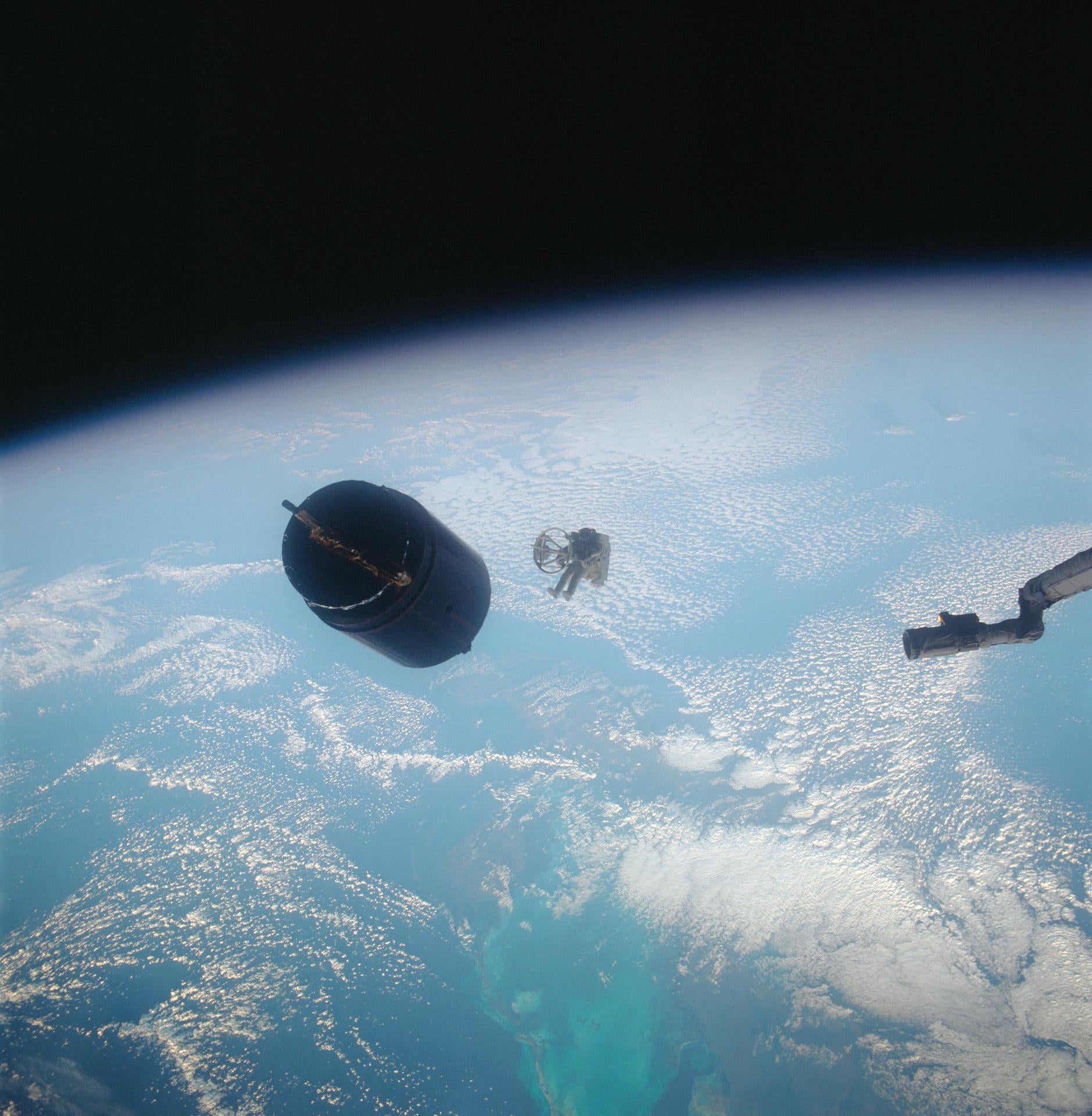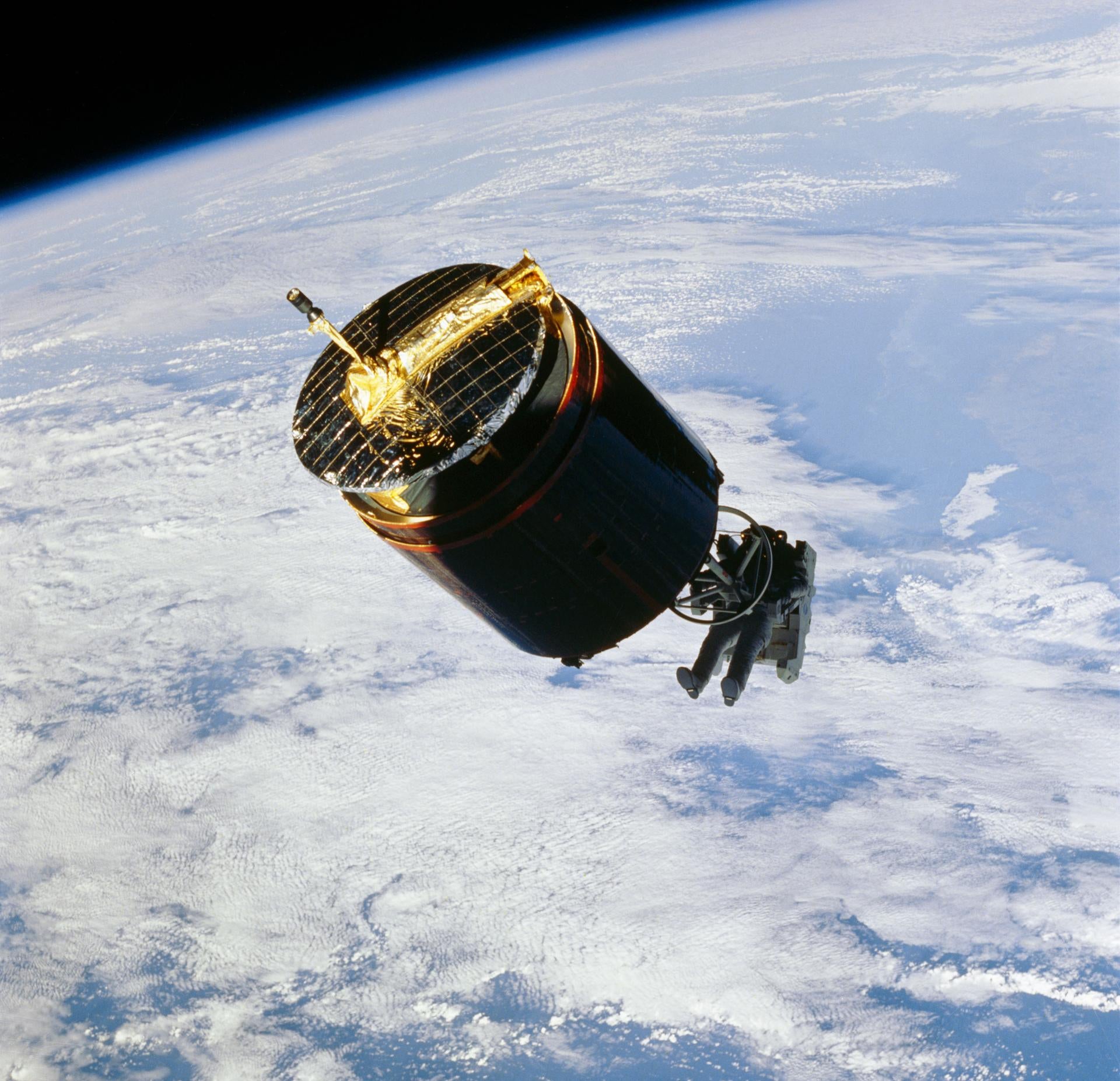Risky business
Dear readers,

Dear readers,
Welcome to Quartz’s newsletter on the economic possibilities of the extra-terrestrial sphere. Please forward widely, and let me know what you think. This week: Underwriting orbital risk, Space Force is real, and Stratolaunch’s new owner.
🌘 🌘 🌘
Risky ventures have been on the menu at Lloyds of London since the 17th century, when a London coffee shop became the clearinghouse for shipping gossip and soon, maritime insurance. The insurance market would be the first to offer aviation insurance policies, and covered the first commercial communications satellite in 1965.
Heck, in 1984, Lloyds hired the Space Shuttle Discovery to pop into orbit and bring back two satellites that had been accidentally deployed in the wrong place. Lloyds wanted to sell the refurbished spacecraft back on Earth to help cover its losses on the policy. (The astronauts on the mission were later flown to Blighty to receive congratulations from prime minister Maggie Thatcher and Prince Charles.) Today, Lloyd’s earns about $150 million in premiums each year from satellite operators like Iridium and Globalstar.
So it’s not necessarily a surprise that the venerable insurer is now pitching a new product for small satellites, aiming to capitalize on the boom in space investment. It’s called Llift Space—see what they did there?
And yet the timing is a little strange! It’s been a bad year for satellite insurance, including the July failure of a Vega rocket that represents the largest claim on record—a cool $415 million—and the decision by Swiss Re to pull out of the market altogether. Just one claim can wipe out an insurer’s entire annual earnings.
Trevor Maynard, who is the head of innovation at Lloyds, told Quartz the timing is related to changes in the space industry itself. The new generation of small satellites and the rockets that launch them, ambitious plans to develop mega-constellations containing thousands of satellites, and the rise of private space tourism all promise new ways of doing business—and insuring it.
Consider that in the past, most satellites were large, incredibly expensive and bespoke. Now, an increasing share are smaller, cheaper and practically mass produced. That could make insuring them simpler. On the other hand, they are likely flying in orbits closer to Earth with greater risk from orbital debris. Lloyds’ underwriters are already tracking solar weather and orbital debris, and now they are refining their calculations to make their work more useful.
Satellites are likely to remain the focus of this work in the near future. But Lloyd’s is also an insurer for Virgin Galactic, the space tourism company that went public this year and is expected to begin operations in 2020. The rules around flying people into space for money remain effectively unwritten, which will be another obstacle faced by underwriters tasked with covering the myriad risks of human spaceflight.
While it remains to be seen whether Lloyds can win many clients with its new product—it declined to comment on who will be among the first buyers of the new coverage—but its interest in doing so is one more signal that the space economy is maturing.
🛸 🛸 🛸
Imagery Interlude
What does it look like when you hire astronauts to go wrangle a lost satellite back to Earth for you? Like this:

These pictures show astronaut Dale Gardner using the Manned Maneuvering Unit, a device that allows spacesuits to effectively maneuver like spacecraft, approaching the WESTAR VI satellite over Bahama Banks.

After securing that satellite and a second in the shuttle’s payload bay, Gardner got a head start on marketing them for Lloyd’s.

🚀 🚀 🚀
SPACE DEBRIS
Deploy grapples! Speaking of wrangling a satellite in orbit, the company OneWeb has announced the thousands of satellites it wants to launch will be equipped with “grappling fixtures.” That will allow these spacecraft to be more easily snagged if they need to be taken out of orbit, or potentially serviced. Consider it an engineering downpayment on reassuring space stakeholders that, yes, mega-constellation operators are taking safety seriously.
Boeing is setting US space policy. A fascinating report from Washington details Boeing’s attempts to dictate NASA’s exploration plans in Congress. NASA is attempting to gain funding from Congress to launch its 2024 lunar return. The agency’s plan is built around a spacecraft orbiting the moon, called the Gateway, that NASA believes will enable a more sustainable long-term presence on the moon. Boeing just wants lawmakers to pay for an upgrade to its expensive Space Launch System rocket and skip the Gateway. The corporation may win the argument.
Space Force is happening. Republicans and Democrats reached an agreement to create a new military service focused on space as a warfighting domain, but it will still be within the US Air Force and under the auspices of the service’s civilian leaders. It will also not include the space aspects of other branches, like the US Army’s missile defense forces. It’s much more in keeping with the “Space Corps” vision that many lawmakers supported before US president Donald Trump made it a symbolic crusade.
Stratolaunch’s new owner. Stratolaunch—the spruce goose of rocket-launching airplanes built by the late Paul Allen—has been purchased by a surprising buyer: the private equity fund Cerberus, which is owned by billionaire investor and Trump confidant Steve Feinberg. The company is moving away from launching satellites (a plan that never made any sense) and now appears to be pivoting into a new business as a test-bed for hypersonic weapons. There are definitely some Space Force synergies at work.
All eyes on OFT. Today, Boeing and NASA will hold a flight-readiness review ahead of a dress rehearsal—an Operational Flight Test—of the company’s new spacecraft, called Starliner. The vehicle is expected to launch to the International Space Station (ISS) on Dec. 20 to demonstrate that it can safely carry astronauts on the trip next year. The long-awaited qualification test is a major milestone for the long-awaited commercial crew program, which hopes to begin regular service to the ISS in 2020.
Your pal,
Tim
This was issue 27 of our newsletter. Hope your week is out of this world! Please send your most ridiculous insurance stories, favorite grappling techniques, tips, and informed opinions to [email protected]. If you enjoy this newsletter, take 50% off becoming a Quartz member.